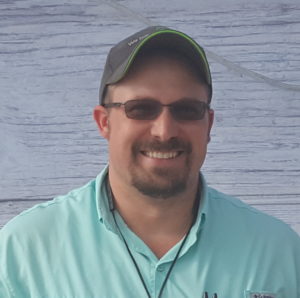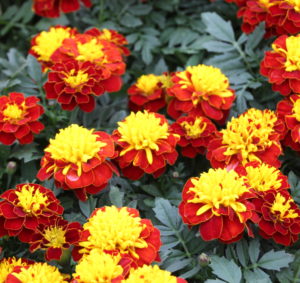From Tires to Tagetes
My time as a flower breeder started as a child, spending time in flower gardens with my grandparents. It wasn’t something I ever thought I would do with my life until one day I was doing it. During high school I worked changing tires and getting dirty out in the Texas heat. This wasn’t my first choice of jobs, but my friends worked there and it paid well, so I endured.

In my junior year of high school, I decided to plant a garden, which inspired me to get a job at a local nursery. This job largely motivated me to become an ornamental plant breeder. As it turned out, it wasn’t the hot and dirty conditions I didn’t like, it was the tires! I had no idea what the path would have in store for me, but I make a decision at that point.
I enrolled at Texas A&M University where I majored in horticulture and opened myself to other opportunities in the field. After two years, I decided I’d rather be the person making the pieces to create designs than the designs themselves.
After graduation, I enrolled at the University of Florida where I studied coreopsis and lantana, but most importantly I was at an off-site research and education center in Balm, Florida. My experience at this research center did more to prepare me for my time as breeder than I would have expected.
SUPER HERO BEGINNINGS
I started at Benary in Watsonville, California, in December 2011. The facility was still under construction so it wasn’t until April 2012 that my first crops of portulaca and French marigolds were available for evaluation and selection.
In college they didn’t teach me how to select through greenhouses of plants. My entire time in grad school I had only about 35,000 plants. The first cycle of my crops at Benary was around 40,000 plants each. Dealing with a few hundred plants isn’t the same as tens of thousands. I had to work out the breeding, as well as the labeling systems that I would eventually use — a huge improvement, since at the very beginning I had to write all the labels by hand!
As our systems came on line at our new site, I could begin to focus on breeding and learning my new job. French marigolds were particularly interesting to me because we could breed two cycles per year. I learned a lot about how to process breeding cycles, the pitfalls of holding material too long, and especially the complications associated with “uncooperative” plants. Since this crop was so fast there was very little time to pivot to solve issues and I had to find ways to compensate.
After about five breeding cycles we finally started to have some new experimental material to evaluate in our fields and internal trial sites. It became very exciting to see the direct comparison of the new genetics to the existing and old varieties. It was probably the first time I had tangible feedback that I was going in the right direction with my efforts. I was able to see the earliness, compact pack habit, and general uniformity of what would eventually become Super Hero marigolds.

Next, I had to work on producing enough seed to send to our production sites. This was certainly an interesting task. I felt we needed isolations to keep the lines pure. This led to finding a source to construct our “casitas” or little caged houses that the plants would grow in. I was insistent that we produce them inside a larger greenhouse because I felt it wasn’t safe to produce so many outside.
We then found a way and place for 13 little cages in one of our greenhouses. I’ll just say that decision didn’t make me too popular with the growing team. Since then we have reduced the number of cages used because we’ve found other ways to address it. I’m not sure if the growers forgive me for that decision or not.
A STAR IS BORN
When the series of marigolds came through production we began to compare it to the breeding seed lots we had. It was clear we had a product we thought would work, including a special color “Spry.” Looking at it on the bench it always stood out like a puppy that wouldn’t let you move on until you said hello to it. We decided that it was worthy of an All-America Selections entry. As luck would have it, spending countless hours looking at small details in color patterns really paid off.
In 2018, Benary Watsonville had its first major accomplishment by introducing a crested French marigold seriesand an AAS award winner. It was a pretty good start for a new facility and a new breeder — and I, for one, feel like we’re just getting started.


 Video Library
Video Library 




















